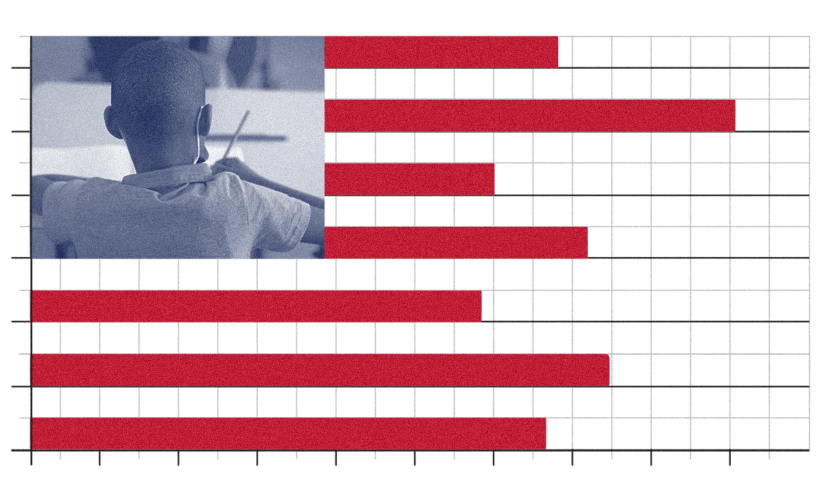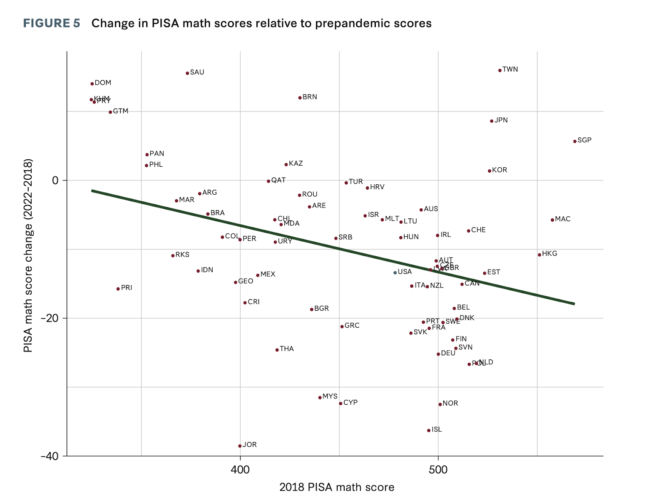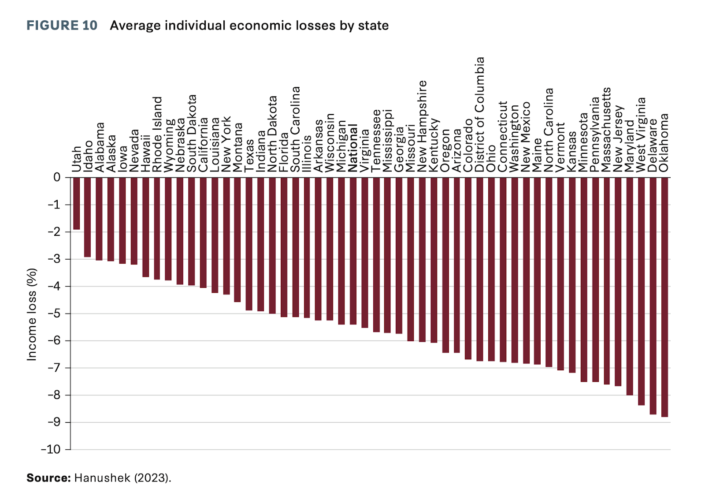During this summer, a team of students from MIT embarked on a journey to the sou …
Loss of Education Translates to Loss of Income, Leading to Potential $31 Trillion Cost for U.S.
Emma Wordsmith

America’s students are falling behind their international counterparts post-pandemic, as per a recent analysis by Stanford University economist Eric Hanushek. The long-term costs of incomplete learning in recent years are estimated at a staggering $31 trillion throughout the 21st century, surpassing the country’s annual Gross Domestic Product.
Stanford’s right-leaning Hoover Institution unveiled a new report this morning, echoing earlier warnings by noted education finance expert Eric Hanushek about the detrimental effects of virtual learning during the pandemic. Hanushek has long cautioned that extensive virtual instruction due to COVID would significantly impact the skills and earning potential of students.
The latest study by Hanushek delves into the math proficiency of U.S. students on two standardized tests—the Programme for International Student Assessment (PISA) and the National Assessment of Educational Progress (NAEP), commonly known as the Nation’s Report Card, undertaken by fourth- and eighth-graders nationwide.
PISA results from December indicated a marked decline in U.S. math scores between 2018 and 2022, further exemplifying the COVID-induced “crisis” in the subject, as outlined by federal officials. Surprisingly, despite the dip in scores, the U.S. saw a marginal international rank improvement due to more significant declines in other countries, prompting Education Secretary Miguel Cardona to commend the Biden administration’s support for schools during the pandemic.
In a recent interview with The 74, Hanushek expressed concerns about K-12 students’ consistently average math performance over the past few decades. Despite Massachusetts being the highest-scoring state, its students still lagged behind those from 15 other nations, with Puerto Rico landing below nations like Kosovo, El Salvador, and Cambodia.
If our best-performing state school system is 16th in the world, that doesn’t seem good to me.
Erick Hanushek, Stanford University
Hanushek highlighted that the U.S.’s improved math ranking on PISA was primarily due to greater disruptions in schooling in other countries like Slovenia and Norway, which were top-performers in previous assessments.

Overall, nations with higher 2018 PISA rankings saw more substantial learning losses during COVID compared to lower-scoring countries. Hanushek emphasized the importance of quality education, pointing out that Canadian students were more adversely affected by online learning than those in less effective Philippine schools.
According to Hanushek, the amount of learning lost during the pandemic was inversely correlated with the pre-pandemic educational achievements—students who were learning more before the outbreak suffered greater losses as a result.
Despite the U.S.’s mediocre international standing, the country experienced lesser math declines than the PISA average between 2018 and 2022. In contrast, high-achieving East Asian countries such as Taiwan, Singapore, Japan, and South Korea saw improvements in math proficiency during the pandemic.
The setbacks on NAEP and PISA underscore the grim reality that the future well-being of affected students will be significantly compromised. Harvard Graduate School of Education professor Martin West attributed this to the economic structure of the U.S., where skills and education are highly valued.
“In the U.S., skill sets are crucial for economic success, which amplifies the impact of learning loss on individual students’ earnings compared to other nations,” West explained.
Significant State Disparities
Hanushek’s groundbreaking analysis estimates the cost of learning loss at an alarming $31 trillion until the year 2100, far surpassing the economic repercussions of COVID-related closures and job losses or the stagnation following the Great Recession.
This projection is based on prior research linking students’ test results to their future earnings. Hanushek predicts that the cumulative decline in innovation and human capital development will impede long-term economic growth in the U.S., affecting even those not directly impacted by learning loss.
In contrast to another prominent forecast, economists Thomas Kane and Douglas O. Staiger projected a future cost of $900 billion in 2022 based on eighth-grade NAEP math results post-pandemic. However, Hanushek and Bradley Strauss anticipate a more significant decrease in future earnings, ranging from 5 to 6 percent.
While Staiger considers his and Kane’s estimates conservative, he acknowledges the looming costs of even minor productivity losses due to learning disruptions.
Even small impacts of the learning loss on future economic growth impose enormous costs on society.
Douglas O. Staiger, Dartmouth College
Staiger emphasized the far-reaching consequences of learning loss on economic growth, particularly concerning high-income countries like the U.S., where even slight reductions in growth rate pose substantial societal costs.
The burden of these costs is expected to vary significantly among states, with major economies like California, Texas, New York, Florida, and Pennsylvania projected to absorb losses exceeding $500 billion. Geographical differences will also influence individual income losses, with states like Utah experiencing minimal impacts compared to regions like West Virginia, Delaware, and Oklahoma, where losses are expected to be more severe.

University of Michigan economist Sarah Cohodes raised concerns about the unequal toll of learning loss, especially for students already facing challenges or transitions during the pandemic’s onset. While all students experienced math setbacks during the crisis, those undergoing critical life transitions endured more significant losses.
Highlighting the disparities in learning loss, Cohodes shared her daughter’s experience, emphasizing the challenges faced by students transitioning between educational phases during the pandemic.
The people I worry about are the ones transitioning between elementary and middle school, or who graduated from high school and missed out on final preparations for what comes next.
Sarah Cohodes, University of Michigan
Hanushek advocated for incentivizing top teachers to address learning recovery challenges, emphasizing the disproportionate impact on students who graduated or left school during the pandemic. This lack of effective interventions by education authorities reflects a failure to acknowledge the magnitude of the crisis.
With approximately 17 million children already affected by learning loss, Hanushek highlighted the irreversible consequences of delayed action, asserting that the academic setbacks of these individuals may never be fully rectified.
The 74.




